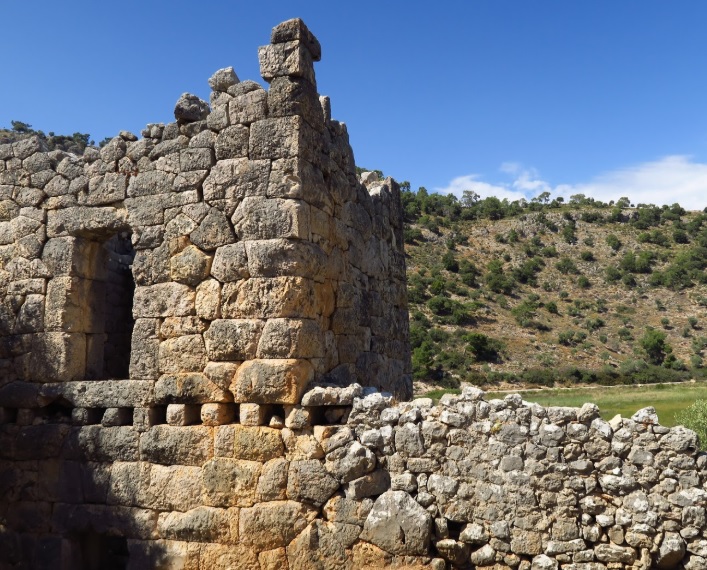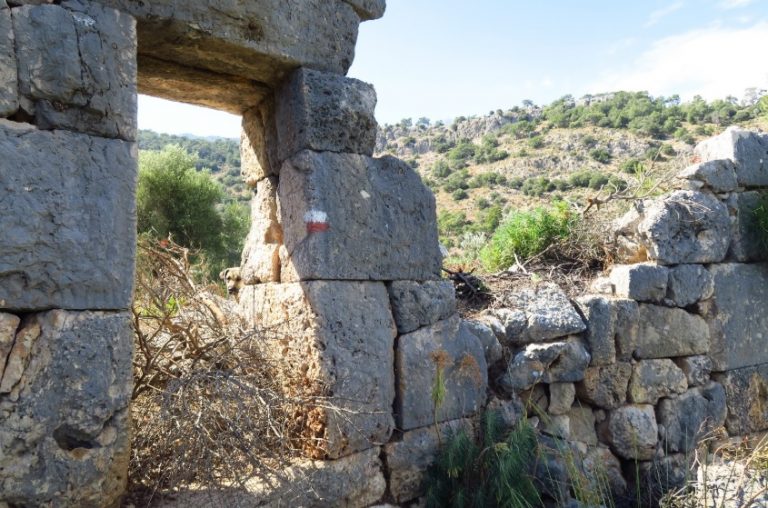Ancient Sites Pydnai and Xanthos
In this blog Hiking on The Lycian Way, we look at two ancient sites; Pydnai and Xanthos. We hope to provide some insight for hikers enjoying The Lycian Way.
Pydnai was a small naval and military base fortress. In antiquity it guarded the estuary at the west end of Patara Beach. The marshy area around it was once a bay and was probably a deep water harbour. It is made of well-preserved polygonal masonry which was smoothed on the outer walls to make it hard to scale.

There are 11 rectangular towers at its corners and mid-way along the walls. It also has 7 protruding stairways which allowed soldiers to quickly scale its walls from the inside. Battlements were later added on upper walls. There is a small church within the walls. Inscriptions have been found in and around the fort; all are of Imperial date and one links Pydnai with Xanthos. It is likely that Pydnai acted as an early warning for larger settlements inland that a sea attack was imminent.

Xanthos (or Xanthus) was the capital city of Lycia with a bloody history. Records start around the 6th Century BC of it being an important site. It has been ruled by Lycians, Persians, Greeks and Romans. Rather than be captured the occupants of the city twice murdered their kin and killed themselves or fought to the death.

Some of Xanthos’ most famous remains were removed by Charles Fellows around 1840. These include the Nereid Monument, The Harpy Tomb and Pajarva Tomb. They can be viewed in the British Museum and are well worth the visit.
What remains at Xanthos is still very impressive. The Harpy Tomb has been restored and the main street and theatre give a scale to the size of the city. One monument, the Xanthian Obelisk, is a trilingual recording of Greek, Lycian and an older Anatolian language called ‘Milyan’. This Provided a unique opportunity for archaeologists to decipher the ancient languages. The site has been designated as a UNESCO World Heritage Site since 1988.

If you would like more information, about Hiking on The Lycian Way then you can contact us here: http://localhost/lycian4/contact-us/
Further reading:
http://whc.unesco.org/en/list/484
